-
 Bitcoin
Bitcoin $106,754.6083
1.33% -
 Ethereum
Ethereum $2,625.8249
3.80% -
 Tether USDt
Tether USDt $1.0001
-0.03% -
 XRP
XRP $2.1891
1.67% -
 BNB
BNB $654.5220
0.66% -
 Solana
Solana $156.9428
7.28% -
 USDC
USDC $0.9998
0.00% -
 Dogecoin
Dogecoin $0.1780
1.14% -
 TRON
TRON $0.2706
-0.16% -
 Cardano
Cardano $0.6470
2.77% -
 Hyperliquid
Hyperliquid $44.6467
10.24% -
 Sui
Sui $3.1128
3.86% -
 Bitcoin Cash
Bitcoin Cash $455.7646
3.00% -
 Chainlink
Chainlink $13.6858
4.08% -
 UNUS SED LEO
UNUS SED LEO $9.2682
0.21% -
 Avalanche
Avalanche $19.7433
3.79% -
 Stellar
Stellar $0.2616
1.64% -
 Toncoin
Toncoin $3.0222
2.19% -
 Shiba Inu
Shiba Inu $0.0...01220
1.49% -
 Hedera
Hedera $0.1580
2.75% -
 Litecoin
Litecoin $87.4964
2.29% -
 Polkadot
Polkadot $3.8958
3.05% -
 Ethena USDe
Ethena USDe $1.0000
-0.04% -
 Monero
Monero $317.2263
0.26% -
 Bitget Token
Bitget Token $4.5985
1.68% -
 Dai
Dai $0.9999
0.00% -
 Pepe
Pepe $0.0...01140
2.44% -
 Uniswap
Uniswap $7.6065
5.29% -
 Pi
Pi $0.6042
-2.00% -
 Aave
Aave $289.6343
6.02%
What does the positive expansion of the WVAD mean? What information does the deepening of the negative value reveal?
The WVAD indicator helps traders assess money flow in cryptocurrencies, showing buying pressure with positive expansion and selling pressure with negative deepening.
Jun 11, 2025 at 05:07 pm
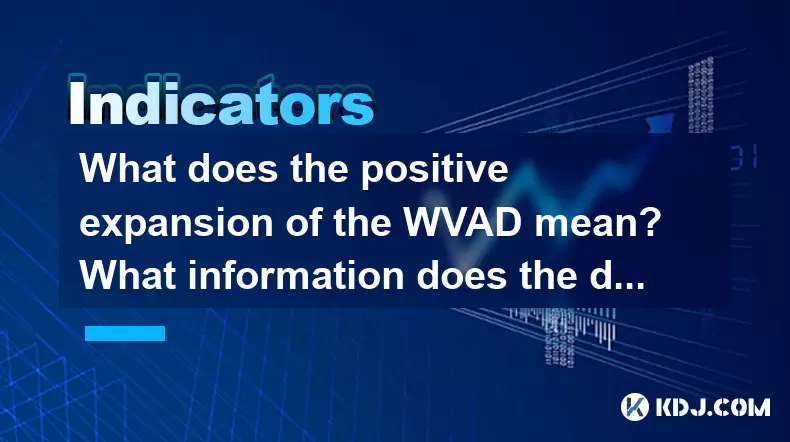
Understanding the WVAD Indicator
The Weighted Volume Accumulation/Distribution (WVAD) indicator is a technical analysis tool used in the cryptocurrency trading community to assess the flow of money into and out of a specific asset. It combines both price and volume data to provide traders with insights into the strength of buying and selling pressure. The WVAD is particularly useful for identifying potential trend reversals and confirming the strength of current trends.
Positive Expansion of the WVAD
When the WVAD shows a positive expansion, it indicates that there is a significant increase in buying pressure. This occurs when the closing price of the cryptocurrency is consistently higher than the midpoint of the trading range for the period, and this is accompanied by higher trading volumes. A positive expansion of the WVAD suggests that more money is flowing into the asset, which can be interpreted as bullish sentiment among traders.
To understand this better, consider the following scenario: If a cryptocurrency's price closes near its high for several consecutive periods, and the trading volume during these periods is high, the WVAD will show an upward trend. This indicates that buyers are actively pushing the price up, and the market is likely to continue its upward trajectory.
Deepening of the Negative Value in WVAD
Conversely, when the WVAD shows a deepening of the negative value, it signifies a strong increase in selling pressure. This happens when the closing price of the cryptocurrency is consistently lower than the midpoint of the trading range for the period, and this is accompanied by higher trading volumes. A deepening negative value in the WVAD indicates that more money is flowing out of the asset, which can be interpreted as bearish sentiment among traders.
For instance, if a cryptocurrency's price closes near its low for several consecutive periods, and the trading volume during these periods is high, the WVAD will show a downward trend. This suggests that sellers are actively pushing the price down, and the market is likely to continue its downward trajectory.
Interpreting WVAD Trends in Trading
Traders often use the WVAD to confirm trends identified by other indicators. For example, if a cryptocurrency's price is trending upward and the WVAD is also showing a positive expansion, it provides additional confirmation that the bullish trend is strong. Similarly, if the price is trending downward and the WVAD is showing a deepening negative value, it reinforces the bearish trend.
It's important to note that the WVAD should not be used in isolation. Traders typically combine it with other technical indicators, such as moving averages, RSI, and MACD, to get a more comprehensive view of the market. By doing so, they can make more informed trading decisions and better manage their risk.
Practical Application of WVAD in Trading
To effectively use the WVAD in trading, follow these steps:
- Select a Trading Platform: Choose a reliable trading platform that offers the WVAD indicator. Popular platforms like TradingView, Binance, and Coinbase Pro often include this tool.
- Add the WVAD Indicator: Navigate to the chart of the cryptocurrency you are interested in, and add the WVAD indicator to the chart. This is usually done through a menu where you can select and apply various technical indicators.
- Analyze the WVAD Trend: Observe the trend of the WVAD. If it is showing a positive expansion, it indicates strong buying pressure. If it is showing a deepening negative value, it indicates strong selling pressure.
- Confirm with Other Indicators: Use other technical indicators to confirm the trend indicated by the WVAD. For example, if the WVAD is positive and the RSI is also indicating overbought conditions, it might suggest a strong bullish trend.
- Make Trading Decisions: Based on the combined analysis, make your trading decisions. If the WVAD and other indicators suggest a bullish trend, you might consider buying the cryptocurrency. If they suggest a bearish trend, you might consider selling or shorting the asset.
Limitations of the WVAD Indicator
While the WVAD is a powerful tool, it has its limitations. It can sometimes give false signals, especially in highly volatile markets. Additionally, the WVAD is a lagging indicator, meaning it reflects past price and volume data. Traders should be aware of these limitations and use the WVAD in conjunction with other analysis methods to improve the accuracy of their trading decisions.
Frequently Asked Questions
Q: Can the WVAD be used for short-term trading?
A: Yes, the WVAD can be used for short-term trading. Traders often use shorter time frames, such as 15-minute or 1-hour charts, to analyze the WVAD and make quick trading decisions. However, it's important to combine the WVAD with other short-term indicators to increase the accuracy of the signals.
Q: How does the WVAD differ from the standard Volume Accumulation/Distribution (VAD) indicator?
A: The main difference between the WVAD and the standard VAD is that the WVAD uses a weighted formula that takes into account the closing price's position within the trading range. This makes the WVAD more sensitive to price movements and provides a more accurate reflection of the money flow into and out of an asset.
Q: Is the WVAD suitable for all cryptocurrencies?
A: The WVAD can be applied to any cryptocurrency that has sufficient trading volume and price data. However, it is most effective for cryptocurrencies with high liquidity and active trading, as these assets tend to provide more reliable signals.
Q: Can the WVAD predict market reversals?
A: While the WVAD can provide early indications of potential market reversals, it does not predict them with certainty. Traders often look for divergences between the price and the WVAD as a sign of a possible reversal. For example, if the price is making new highs but the WVAD is not, it could indicate weakening buying pressure and a potential bearish reversal.
Disclaimer:info@kdj.com
The information provided is not trading advice. kdj.com does not assume any responsibility for any investments made based on the information provided in this article. Cryptocurrencies are highly volatile and it is highly recommended that you invest with caution after thorough research!
If you believe that the content used on this website infringes your copyright, please contact us immediately (info@kdj.com) and we will delete it promptly.
- 2025-W Uncirculated American Gold Eagle and Dr. Vera Rubin Quarter Mark New Products
- 2025-06-13 06:25:13
- Ruvi AI (RVU) Leverages Blockchain and Artificial Intelligence to Disrupt Marketing, Entertainment, and Finance
- 2025-06-13 07:05:12
- H100 Group AB Raises 101 Million SEK (Approximately $10.6 Million) to Bolster Bitcoin Reserves
- 2025-06-13 06:25:13
- Galaxy Digital CEO Mike Novogratz Says Bitcoin Will Replace Gold and Go to $1,000,000
- 2025-06-13 06:45:13
- Trust Wallet Token (TWT) Price Drops 5.7% as RWA Integration Plans Ignite Excitement
- 2025-06-13 06:45:13
- Ethereum (ETH) Is in the Second Phase of a Three-Stage Market Cycle
- 2025-06-13 07:25:13
Related knowledge
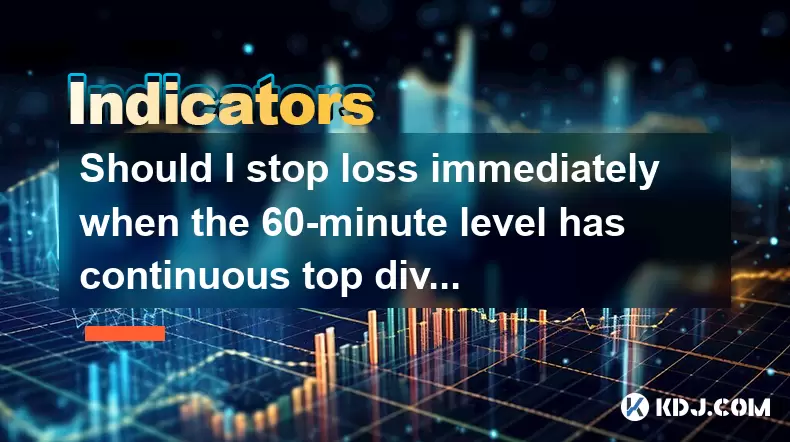
Should I stop loss immediately when the 60-minute level has continuous top divergence?
Jun 17,2025 at 05:28pm
Understanding Top Divergence in the 60-Minute ChartIn cryptocurrency trading, top divergence refers to a technical signal where the price of an asset makes higher highs while the indicator (often RSI or MACD) makes lower lows. This is commonly interpreted as a sign of weakening momentum and potential reversal. When this occurs on the 60-minute chart, it...
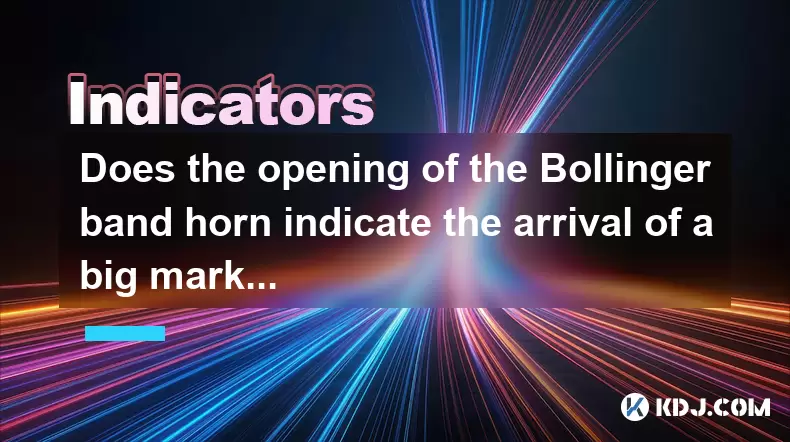
Does the opening of the Bollinger band horn indicate the arrival of a big market?
Jun 17,2025 at 06:28pm
Understanding the Bollinger Bands and Their StructureBollinger Bands are a widely used technical analysis tool in the cryptocurrency market, developed by John Bollinger. They consist of three lines: a simple moving average (SMA), typically set at 20 periods, and two standard deviation bands above and below this SMA. These bands dynamically expand and co...
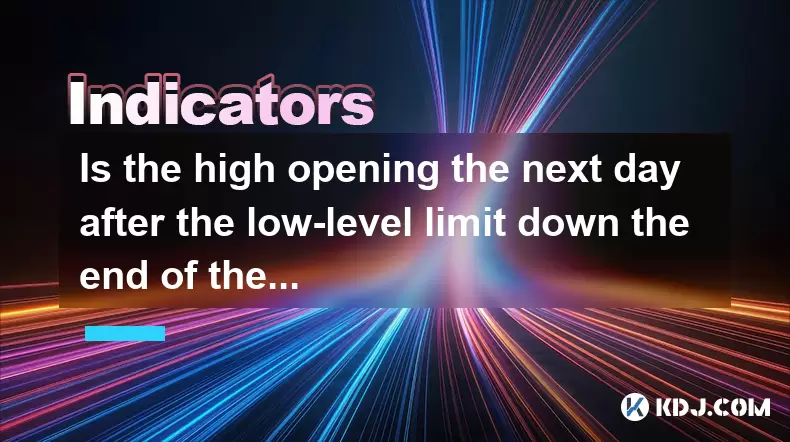
Is the high opening the next day after the low-level limit down the end of the wash?
Jun 17,2025 at 05:57pm
Understanding the Concept of a Limit Down and Its ImplicationsIn the world of cryptocurrency trading, a limit down refers to a situation where the price of a digital asset drops sharply, reaching its maximum allowable decline within a specific time frame. This mechanism is often seen on exchanges that implement daily price limits to prevent excessive vo...
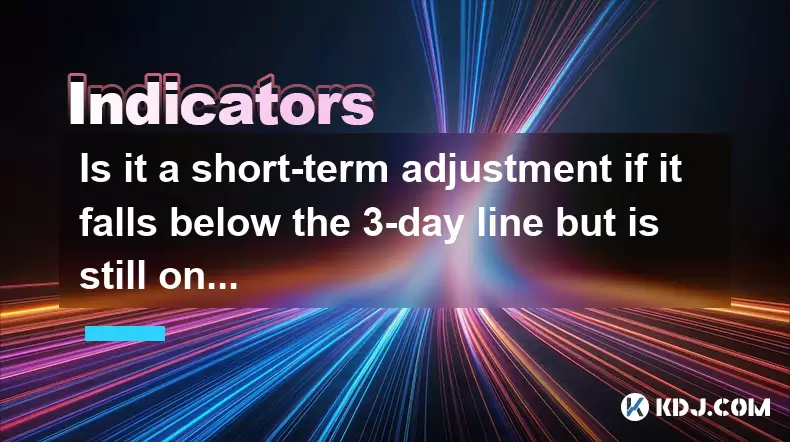
Is it a short-term adjustment if it falls below the 3-day line but is still on the 10-day line?
Jun 17,2025 at 04:07pm
Understanding the 3-Day and 10-Day Moving AveragesIn cryptocurrency trading, moving averages are essential tools for gauging trend strength and potential reversals. The 3-day moving average is a short-term indicator that reflects recent price action with minimal lag, making it highly sensitive to sudden market shifts. In contrast, the 10-day moving aver...
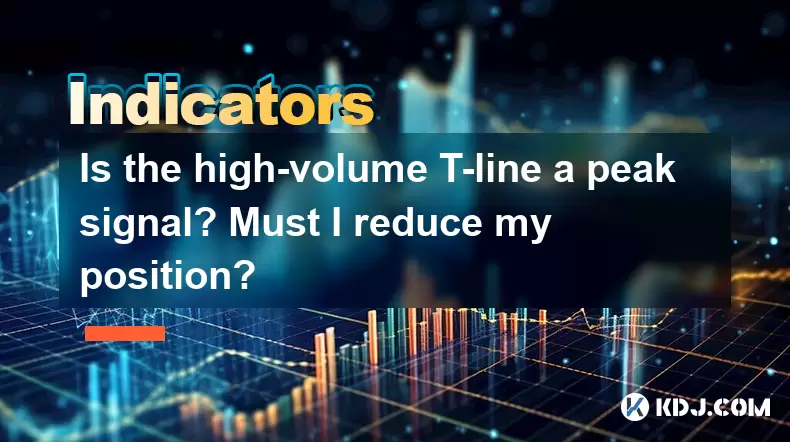
Is the high-volume T-line a peak signal? Must I reduce my position?
Jun 17,2025 at 06:07pm
Understanding the T-Line Pattern in Cryptocurrency TradingIn cryptocurrency trading, technical patterns are frequently used by traders to anticipate price movements. One such pattern is the T-line, which appears on candlestick charts and is characterized by a long upper or lower shadow with little or no body. A high-volume T-line occurs when this patter...
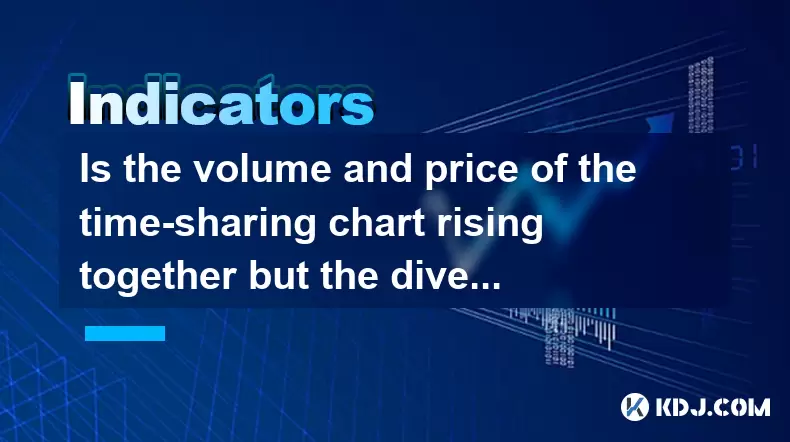
Is the volume and price of the time-sharing chart rising together but the dive at the end of the trading day a lure to buy more? Should I run?
Jun 17,2025 at 07:28pm
Understanding the Time-Sharing Chart DynamicsIn cryptocurrency trading, time-sharing charts are essential tools for short-term traders. These charts show real-time price movements along with trading volume over a specific period, usually within a day. When you observe that both price and volume rise together, it typically signals strong buying pressure ...

Should I stop loss immediately when the 60-minute level has continuous top divergence?
Jun 17,2025 at 05:28pm
Understanding Top Divergence in the 60-Minute ChartIn cryptocurrency trading, top divergence refers to a technical signal where the price of an asset makes higher highs while the indicator (often RSI or MACD) makes lower lows. This is commonly interpreted as a sign of weakening momentum and potential reversal. When this occurs on the 60-minute chart, it...

Does the opening of the Bollinger band horn indicate the arrival of a big market?
Jun 17,2025 at 06:28pm
Understanding the Bollinger Bands and Their StructureBollinger Bands are a widely used technical analysis tool in the cryptocurrency market, developed by John Bollinger. They consist of three lines: a simple moving average (SMA), typically set at 20 periods, and two standard deviation bands above and below this SMA. These bands dynamically expand and co...

Is the high opening the next day after the low-level limit down the end of the wash?
Jun 17,2025 at 05:57pm
Understanding the Concept of a Limit Down and Its ImplicationsIn the world of cryptocurrency trading, a limit down refers to a situation where the price of a digital asset drops sharply, reaching its maximum allowable decline within a specific time frame. This mechanism is often seen on exchanges that implement daily price limits to prevent excessive vo...

Is it a short-term adjustment if it falls below the 3-day line but is still on the 10-day line?
Jun 17,2025 at 04:07pm
Understanding the 3-Day and 10-Day Moving AveragesIn cryptocurrency trading, moving averages are essential tools for gauging trend strength and potential reversals. The 3-day moving average is a short-term indicator that reflects recent price action with minimal lag, making it highly sensitive to sudden market shifts. In contrast, the 10-day moving aver...

Is the high-volume T-line a peak signal? Must I reduce my position?
Jun 17,2025 at 06:07pm
Understanding the T-Line Pattern in Cryptocurrency TradingIn cryptocurrency trading, technical patterns are frequently used by traders to anticipate price movements. One such pattern is the T-line, which appears on candlestick charts and is characterized by a long upper or lower shadow with little or no body. A high-volume T-line occurs when this patter...

Is the volume and price of the time-sharing chart rising together but the dive at the end of the trading day a lure to buy more? Should I run?
Jun 17,2025 at 07:28pm
Understanding the Time-Sharing Chart DynamicsIn cryptocurrency trading, time-sharing charts are essential tools for short-term traders. These charts show real-time price movements along with trading volume over a specific period, usually within a day. When you observe that both price and volume rise together, it typically signals strong buying pressure ...
See all articles

























































































